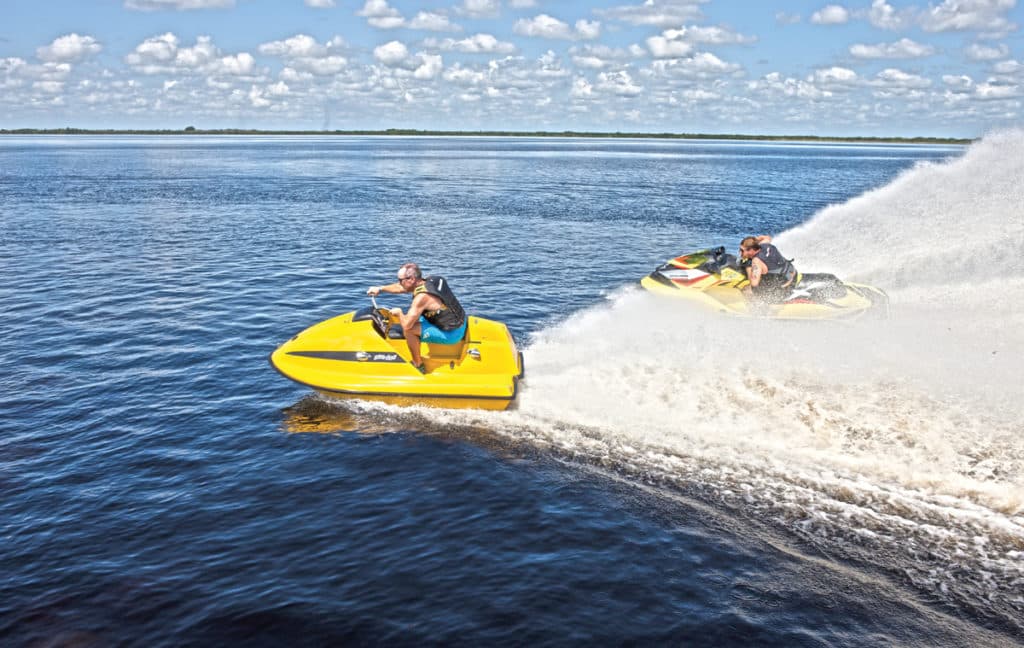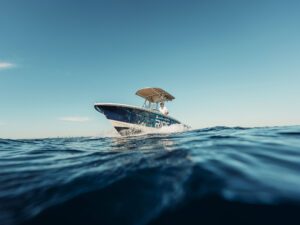I’ve got what can only be described as “human centrifuge face.”
You recall the images from those old National Aeronautics and Space Administration film clips. Astronauts, training to endure G-forces, were whipped round and round on a centrifuge while their cheeks puckered in the wind. That’s me atop Sea-Doo’s potent RXP-X 260, hurtling across the water at close to 70 mph. Or at least, it’s me until I lean the boat into a hairpin turn, change directions at whiplash speed, and, well, let’s just say other cheeks start to pucker. The RXP-X is an absolute beast, a combination of raw power, nimble handling and high-tech wizardry that sets a standard for the PWC market. If there’s one machine that shows just how far PWCs have come in the last 50 years, this may be it.
It’s definitely not your father’s PWC. And I should know … because just minutes before, I rode that one too.
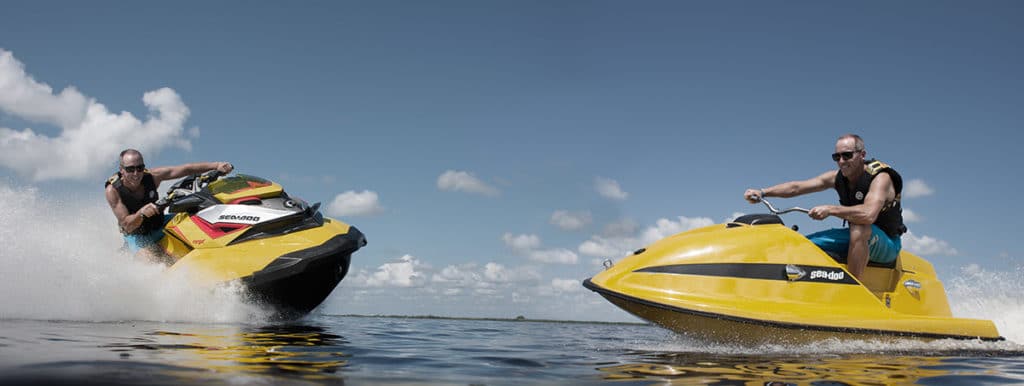
Just Doo-in’ It … ’60s Style
If you’re going to clamor on about how far personal watercraft have come over the years, you really ought to have some perspective. And what better perspective than a ride on the original: a 1968 vintage Bombardier Sea-Doo.
The collaborative effort of two men, Bombardier’s Laurent Beaudoin and Californian inventor Clayton Jacobson II, the craft started as two separate visions. Beaudoin longed to bring the thrills of his company’s infamous Ski-Doo snowmobile to the water. Jacobson had the same wish for a motorcycle and had already begun work on a nimble stand-up craft that eschewed a conventional outboard for jet propulsion. With Bombardier dangling the cash, Jacobson briefly shelved the stand-up and created Beaudoin’s “Sea”-Doo, a craft that would enjoy only a brief two-year lifespan. Five years later, after Bombardier relinquished the patent and licensing rights, Jacobson’s stand-up craft would become reality as the first Kawasaki Jet Ski.
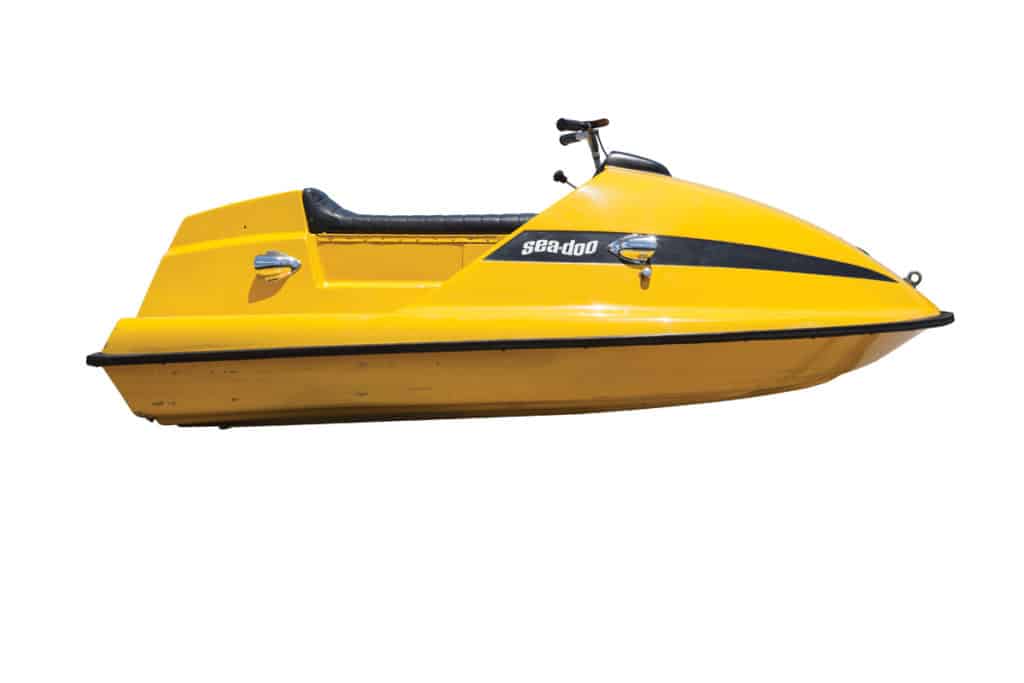
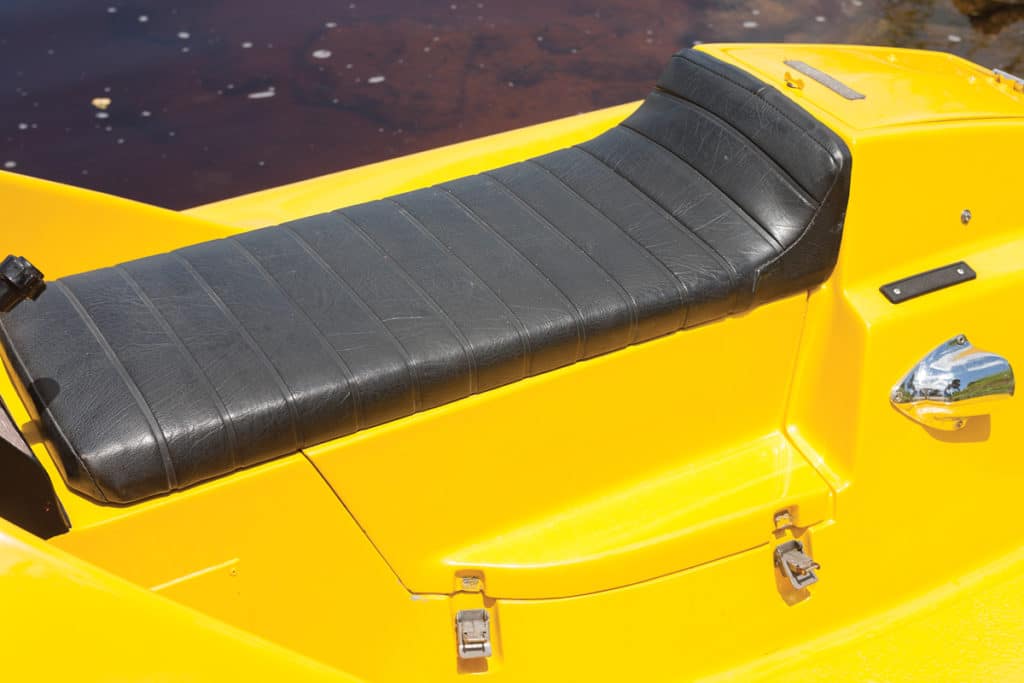
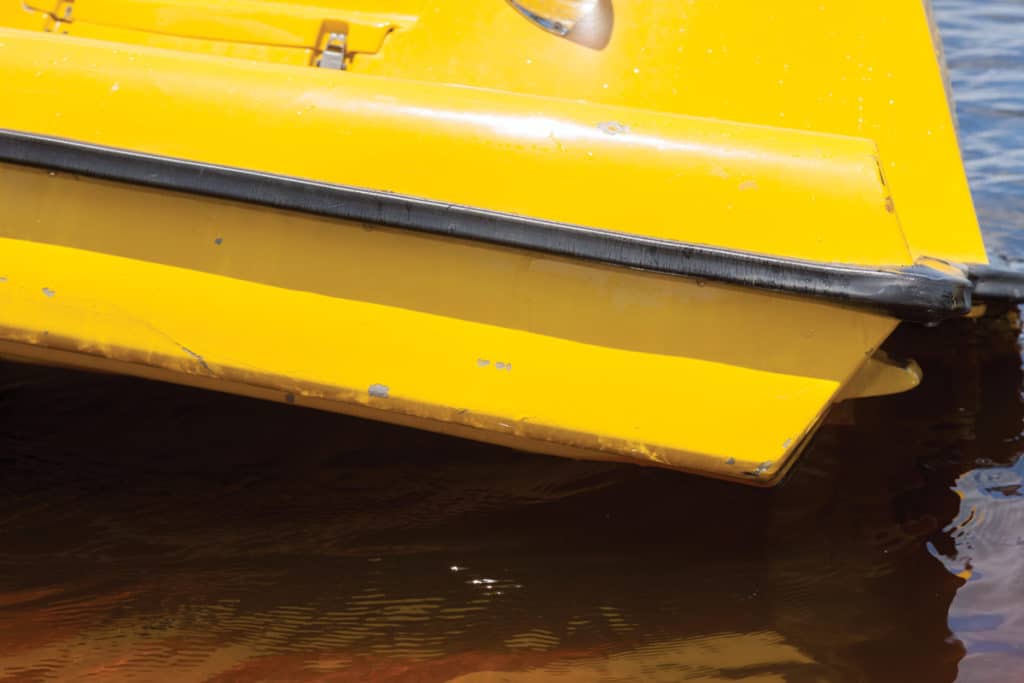
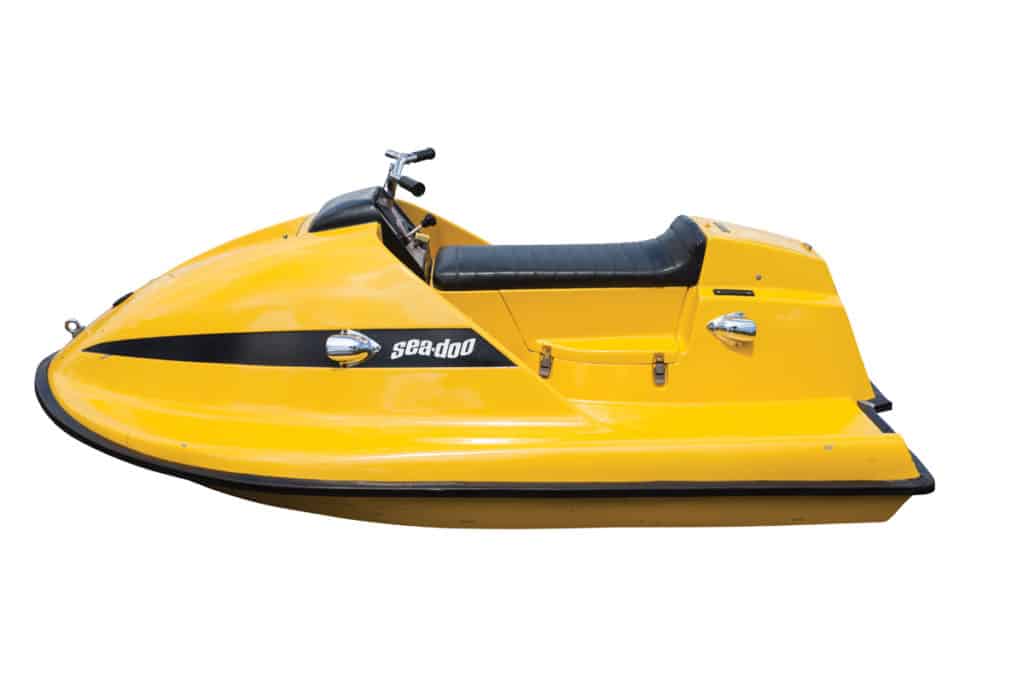
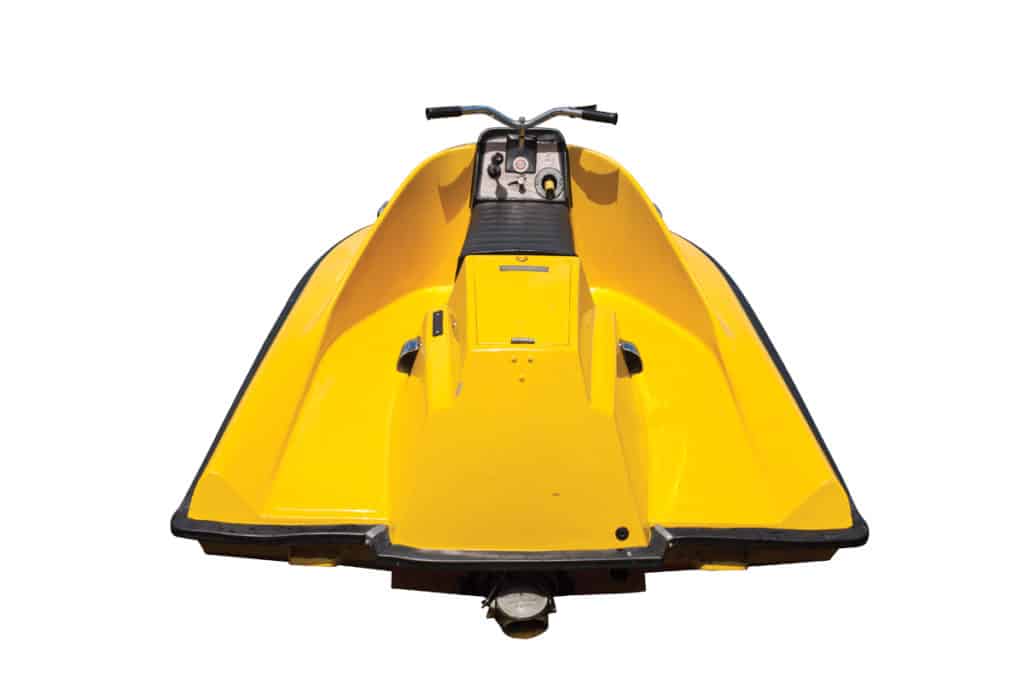
The original Sea-Doo, tweaked by Bombardier to be more rounded in the bow and bathed in the company’s trademark yellow, is almost flying-sauceresque in appearance with a width (58 inches) nearly two-thirds of its 7-foot-7-inch length, minimal deadrise, and two simple strakes breaking up an otherwise smooth hull. The swooping bow angles off amidships to reveal a flat, minimally padded saddle and open footwells. The bare stainless-steel handlebars are borrowed directly from a Ski-Doo. The craft’s handlebar height, in relation to its seat, reminded me of sitting on a coin-operated kiddie ride.
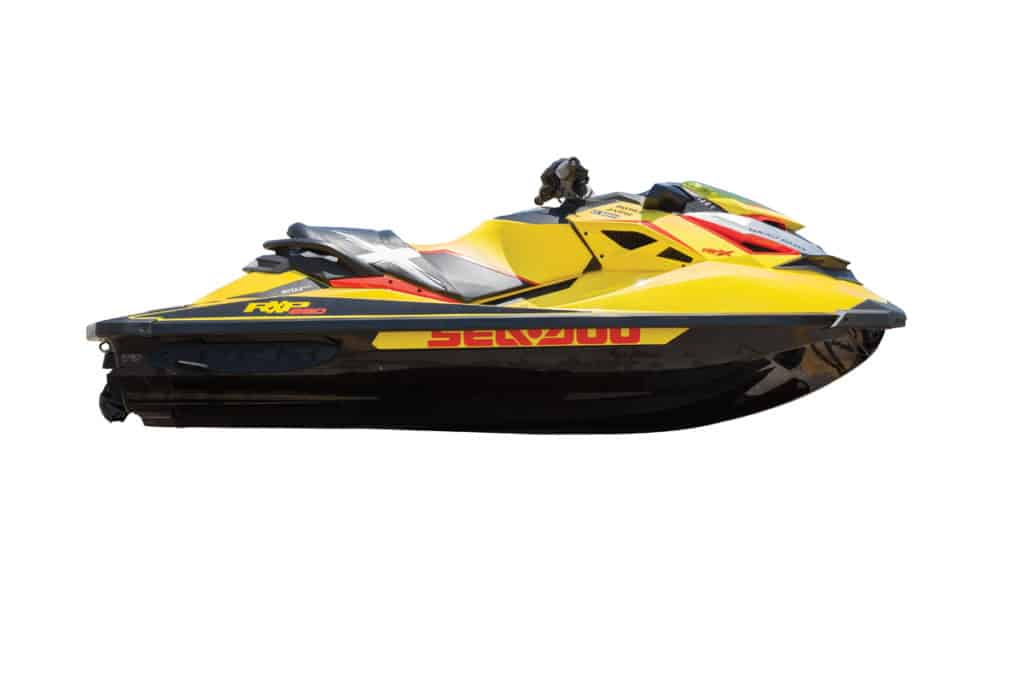
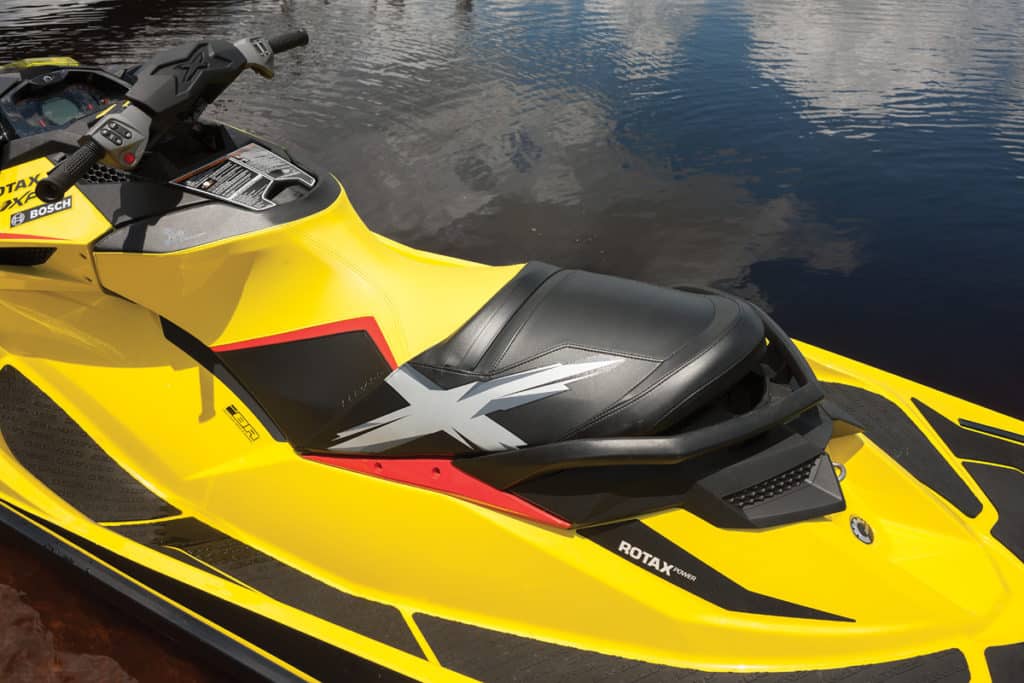
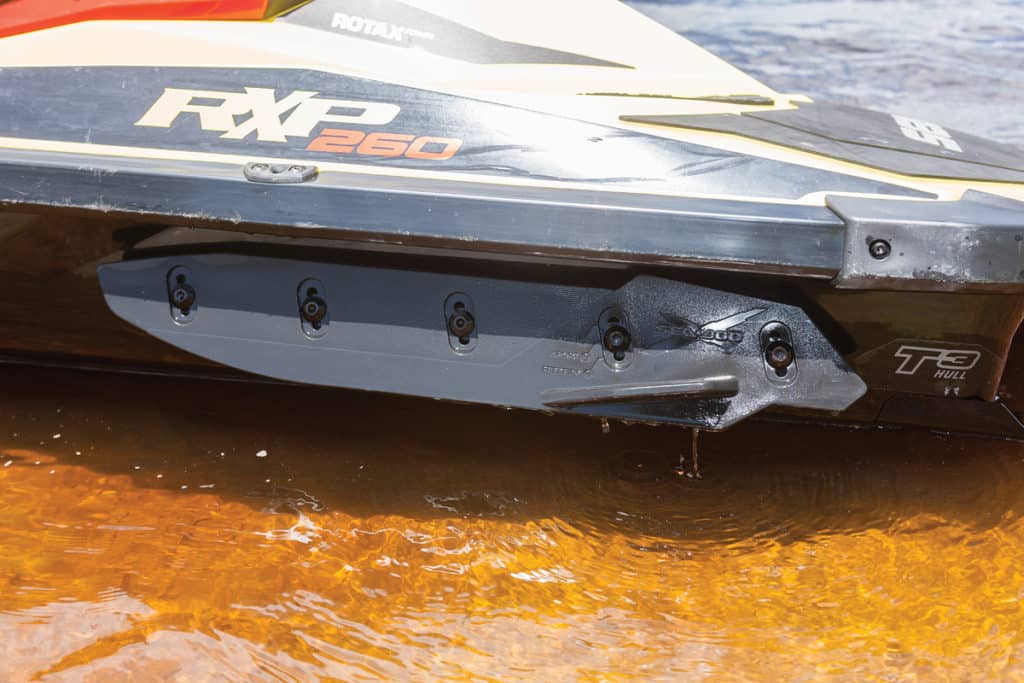
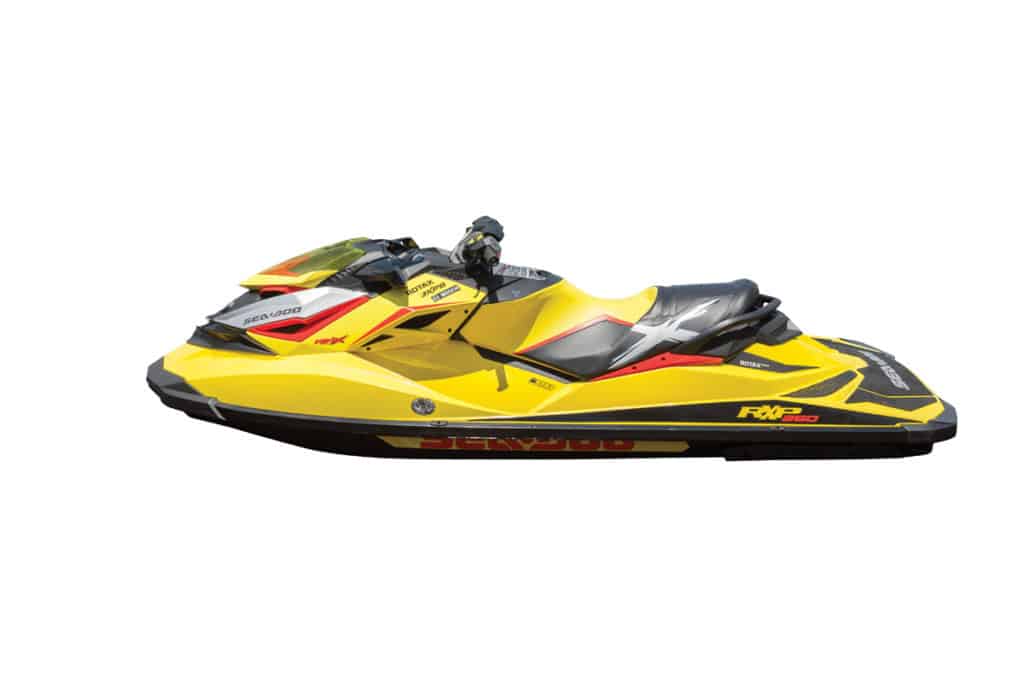
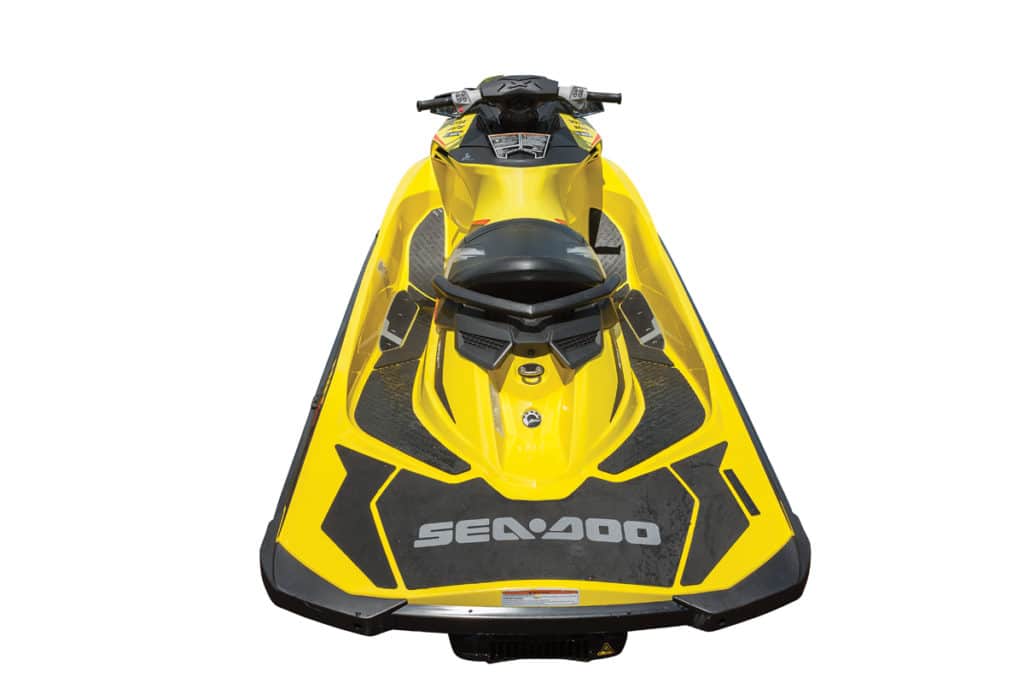
Fast-forward nearly five decades and the modern-day RXP-X seems light years ahead of its simple forebear. It too is futuristic-looking, but in thoroughly 21st-century fashion. It’s 3 feet longer, 10 inches narrower, and features a multistage hull design with softer chines forward and hard chines aft to produce aggressive cornering with an intuitive inside lean. Sponsons enhance this performance and can be adjusted high or low to showcase either a more playful or more aggressive style. Above the bond line, lines are complex. Multiple facets break up the deck, giving the craft an edgy, masculine appearance. Rather than a flat perch, the saddle is sculpted and bolstered to lock the driver in place with an hourglasslike midsection that allows riders to keep their legs closer together and transfer the force of a hard turn from the weaker upper body to the stronger leg muscles. Angled footwell wedges allow additional leverage to be applied in turns and alleviate stress on the knees. The craft’s stylish, padded handlebars can be adjusted in both angle and width to fine-tune the craft to its driver.
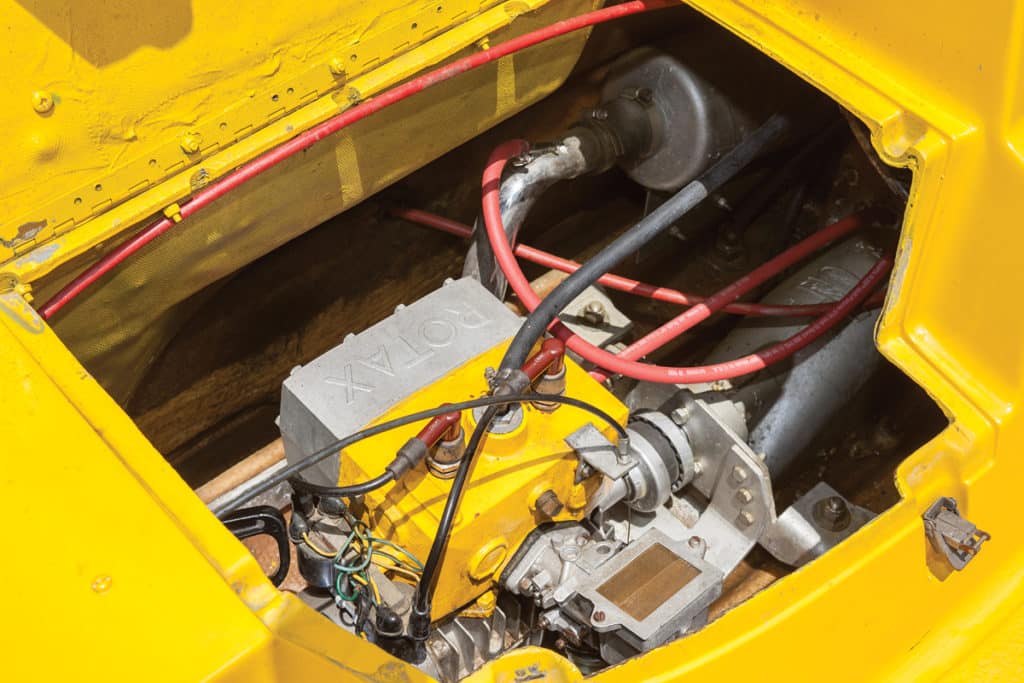
Power … Then and Now
Look below each craft’s seat and the disparity widens exponentially. The original ’68 was powered by an air-cooled, 318 cc single-cylinder Rotax aluminum-block engine, producing a scant 18 horsepower. To funnel enough air into the engine compartment, multiple stainless-steel vents were added to the deck. A small, portable gas tank handled fuel. The engine was initially connected to the craft’s Berkeley jet pump via four separate belts. The design would be modified midway through production to a single flat, cogged belt and cogged pulleys to combat slippage. As my muscles will attest, the initial craft featured a pull start, not the ideal choice when balancing out on the water. An electric start would soon follow and be standard issue by 1969.
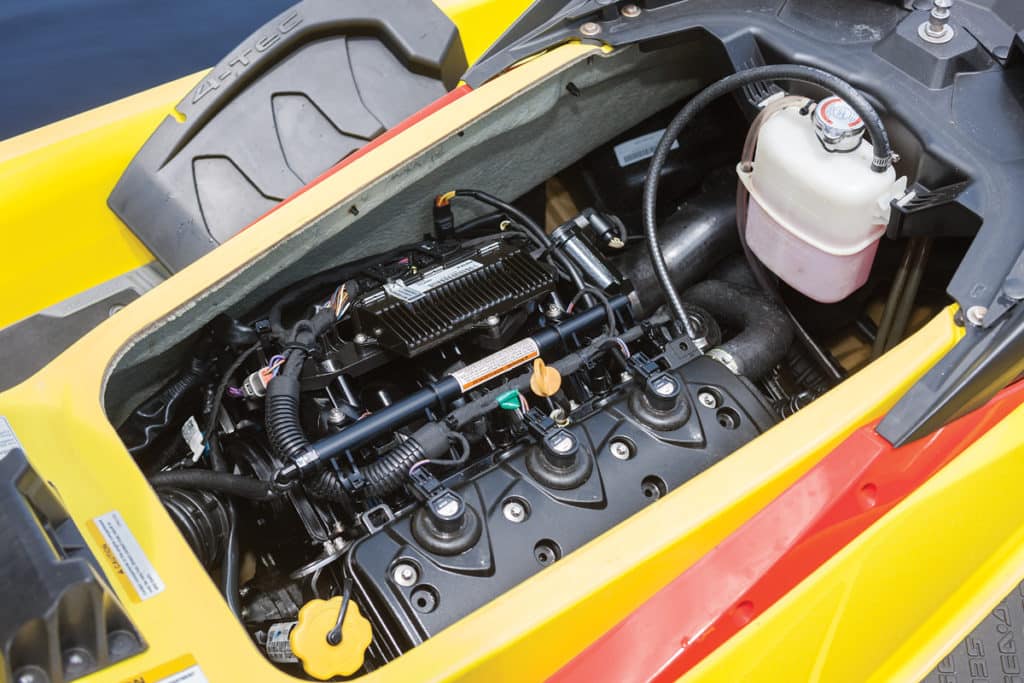
The modern-day ’Doo engine is still produced by Rotax, but most similarities end with the logo on the cylinder head. During my early-summer test, the RXP-X was powered by a 260 hp, 1,494 cc engine. A more efficient 1,603 cc design will debut in 2016, rated at an even 300 ponies or nearly 17 times the power of the original. Both engines’ power is boosted substantially by the combination of a supercharger and intercooler.
Head-to-head, the two machines are night and day. The ’68 accelerates with all the force that 18 horsepower can muster en route to a top speed of 25 mph. Squeeze the throttle of the 2016 RXP-X 300, in contrast, and you’ll surpass that top speed in about 1.5 seconds before topping out at an electronically limited 67 mph.
What’s it like to turn each craft at speed? On the original, it’s a sweeping, skidding feel, with the hull pivoting around the bow while staying relatively flat in the water. In contrast, the RXP-X turns on the proverbial dime. Rolling into corners with an intuitive inside lean, it executes turns with surgical precision, sending up a wall of spray akin to a slalom water skier. The seat design and footwell wedges do an excellent job of transferring the force away from the arms and to the legs, but, in reality, only the best pilots will be able to truly push the craft to its limits; the rest of us will simply hang on.
Want data to back up the seat-of-the-pants perspective? We used an accelerometer through a 120-degree turn and recorded a maximum 2.4 G on the modern RXP-X. That’s greater than what riders experience on Disney’s Space Mountain. The original? We hit 1 G, the equivalent of standing around.
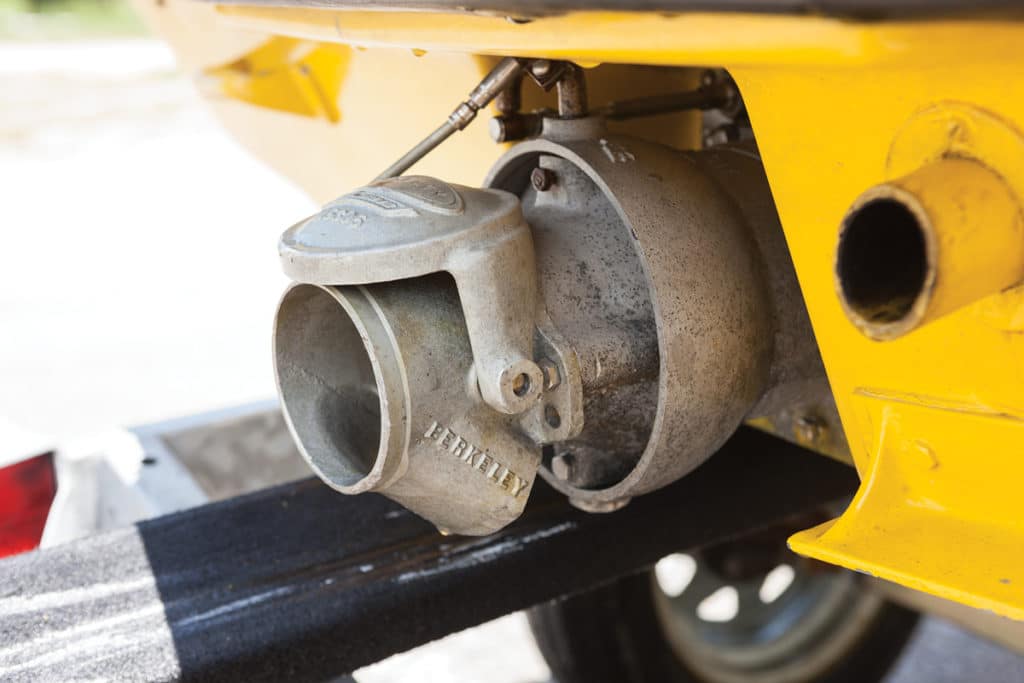
Feature Comparison
Surprisingly, one feature the ’68 shares with its modern-day offspring is an early attempt at forward, neutral and reverse. The original’s Berkeley 5J5 jet pump featured a hinged cap that could be lowered over the nozzle outlet via a push-pull knob on the dash to redirect thrust. It’s not exactly intuitive; you pull the knob out to go forward and push it in for reverse. Still, when activated it does provide some directional control. Mechanical reverse didn’t reappear until 1990, but it’s the most recent generation of craft that has taken the functionality to the next level. Both Sea-Doo’s Intelligent Brake and Reverse (iBR) and Yamaha’s RiDE systems electronically control a modified reverse bucket to effectively mimic forward, neutral and reverse. Pull the activation lever at speed, and the redirected thrust will rapidly slow the craft, providing some degree of braking power. On the RXP-X 300, engaging iBR will rapidly slow the craft, ultimately bringing it to a stop in a 160-foot shorter distance than a comparable unit without brakes. Best of all, the modern systems are highly intuitive. A driver’s hands stay on the handlebars and eyes focused on the water.
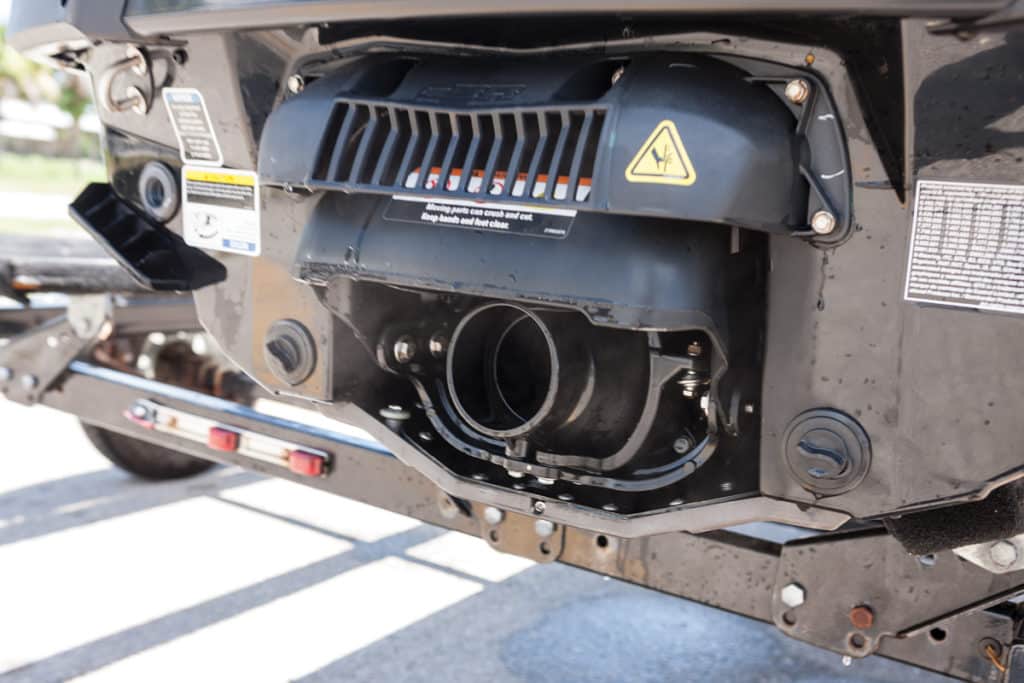
Modern-day craft also benefit from electronic throttle, which enables features like cruise control and no-wake mode. Both allow drivers to lock in speeds at the touch of a button and eliminate the fatigue associated with holding a trigger throttle long-term. Cruise control is also beneficial for towing skiers and boarders because it eliminates the surging that is inevitable with a human hand on the throttle. Electronic throttles even let Sea-Doo engineers develop driver-selected acceleration curves. Choose between a tamer mode that softens throttle response, opt for an eco setting to save fuel, or unleash the engine’s full stock potential — again, with just a tap of a button.
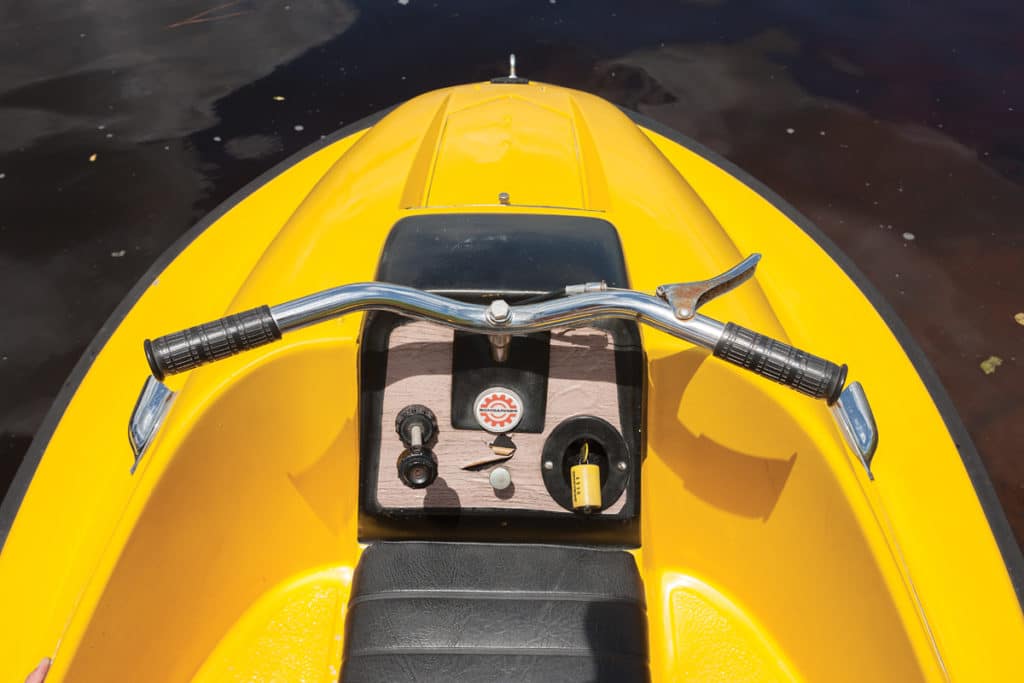
And then there are the less obvious features that separate the RXP-X from its predecessor. All modern-day PWCs feature a lanyard-style cutoff switch. Sea-Doo includes two digitally encoded to match only that particular craft and prevent unauthorized use. The secondary lanyard automatically governs speed.
The issue of losing directional control once throttle is released has also been addressed. Off-throttle assisted steering recognizes “collision avoidance” behaviors and turns on just enough thrust to initiate a turn. Even the infamous noise and emissions issues have long since been addressed. By using resonators, vibration-absorbing components and the naturally quieter four-stroke engine, the RXP-X is quiet. At idle, I recorded a 69 dBa reading versus the original’s 79 dBa. As to those emissions, today’s PWCs feature some of the cleanest engines on the water.
Even the ’68’s air-cooled engine problems have been addressed. Sea-Doo wisely switched to water-cooled engines in 1969, a change that has defined all personal watercraft since. More recently, Sea-Doo has moved to a closed cooling system that uses the ride plate as a heat exchanger, avoiding contaminants and debris.
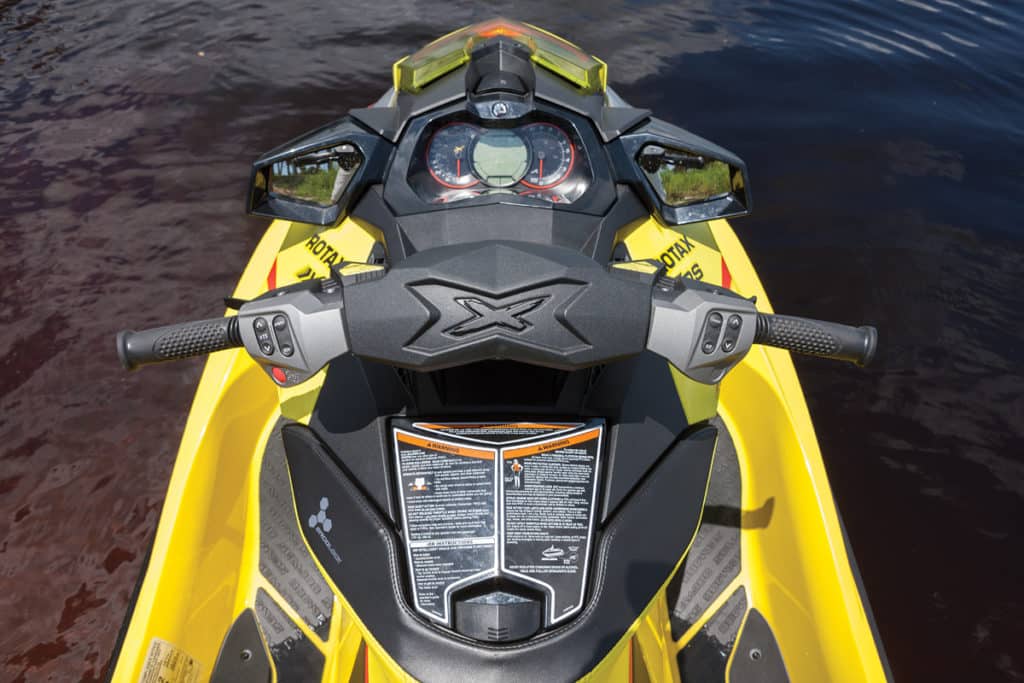
You’ve Come a Long Way, Baby
Clearly, PWCs have come a long way over the years. They’re far more thrilling, far more powerful and far more agile than their ancestor. And yet for all that power, they’re far more civil. They’re quiet and clean to protect the environment, mannerly around a tight dock or launch ramp, and boast the latest high-tech features to assist passengers in enjoying the ride.
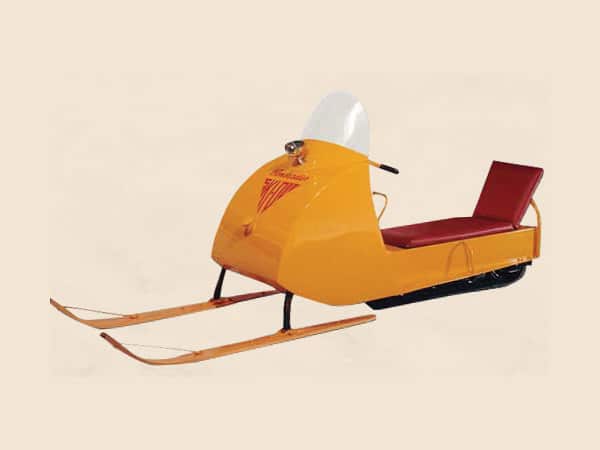
Certainly not your father’s PWC, but I think Dad would approve. In fact, after riding his craft, I know he would.
